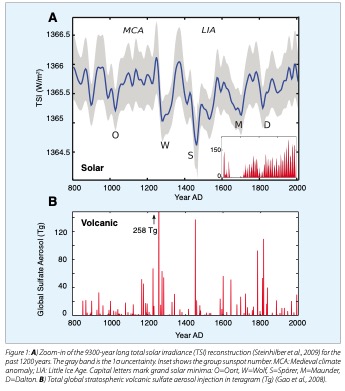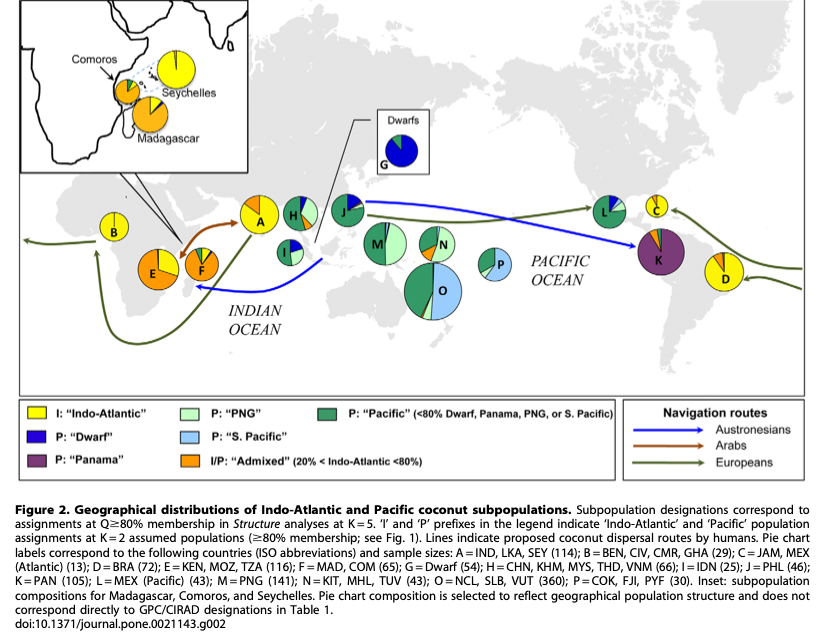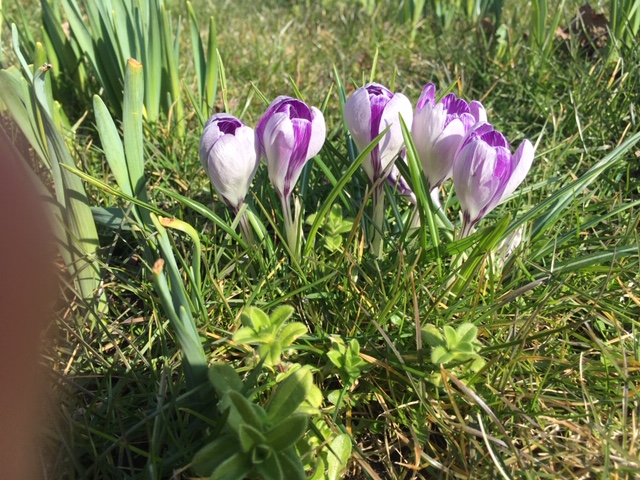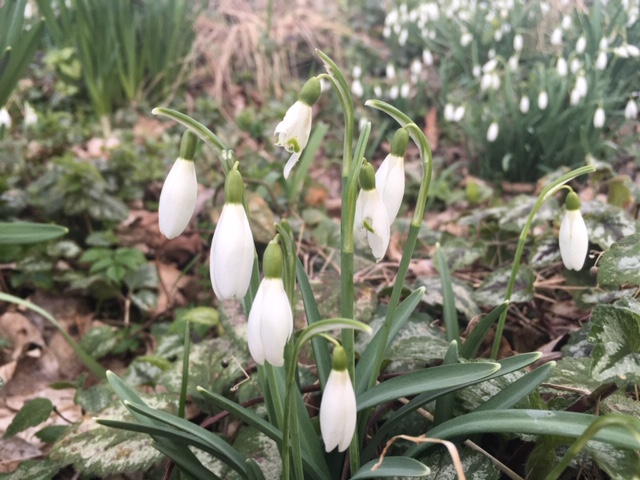Quinoa is a herbaceous plant native to the Central and Northern region of the Andes in South America. This plant was domesticated by the Incas inhabiting the region approximately 5,000 to 3,000 years BCE. This highly valued crop by the Incas, however, was forbidden by Spanish colonisers that intended to substitute quinoa with potatoes, wheat and barley. The Incas challenged this prohibition and maintained quinoa in hidden locations risking having their hands cut off or being killed. Hence, It is due to the resilience of the Incas and their descendants, the Quechua and Aymara indigenous communities, that quinoa has made it to our days (Small 2013).
Despite being a highly appreciated crop by indigenous communities in the Andean regions of Bolivia, Peru, Chile and Ecuador, for most of the post-colonial history of these countries, quinoa was considered as “Indian food” inappropriate for consumption by the elites (Walsh-Dilley 2020).
It was not until the 1980s that the richer North Hemisphere countries grew interested in this nutritious crop. It was then when Indigenous communities in the Bolivian Altiplano (Andean region) began commercialising this crop outside the country via fair-trade routes as an organically certified product. The commercialisation via these ethical routes ensured that the market price of quinoa covered the costs of production in the Bolivian Altiplano (Walsh-Dilley 2020).
The popularity of this pseudo-grain continued growing in the 2000s as consumers in the richer North were keen on finding healthier and gluten-free alternatives to other common grains such as wheat and barley. Quinoa appeared as the alternative that consumers were looking for and its demand increased rapidly. The market prices of this ancient grain skyrocketed as a consequence and after 2008 prices doubled and tripled the previous years marking what is known as the “quinoa boom” (Walsh-Dilley 2020).
Quinoa was not only attractive for its nutritional value but also for its ability to grow in harsh environments with extreme temperatures, very low precipitation and with soils containing high levels of salt and low levels of nutrients. Quinoa was seen as an ideal crop that could alleviate food insecurity worldwide while enduring extreme weather conditions due to climate change. In this context, the Food and Agriculture Organisation (FAO) of the United Nations declared 2013 as the International Year of Quinoa (Bazile, Jacobsen, and Verniau 2016).
The growing interest in quinoa as well as the surge in prices was positively perceived by the traditionally poor and marginalised indigenous community in the Bolivian Altiplano. At last, they had the chance to improve their economic situation and quality of life. But an ancient pseudo-grain traditionally grown as a subsistence crop became a cash crop. Quinoa consumption decreased amongst the indigenous populations and was substituted by other less nutritious grains such as rice and wheat (Jacobsen 2011). If you were a quinoa producer, it was worth selling your production, if you were not, the high prices made it a luxury product that you could not afford.
The high quinoa market prices also attracted producers outside the Bolivian Andes. In Peru, where quinoa had been traditionally cultivated by indigenous peasants in the Andean region, the state invested in expanding quinoa cultivation to other parts of the country. In addition to this, quinoa was no longer produced with traditional methods. Quinoa farmers in Peru used chemical inputs such as fertilisers and pesticides and even sometimes used irrigation to obtain a greater yield (Walsh-Dilley 2020). In 2015, Peru became the greatest exporter of quinoa and the greatest competitor of indigenous communities in the Bolivian Altiplano.
In 2015, the higher availability of quinoa lead to a drastic and unpredicted drop of its market price (Figure above). Quinoa was no longer a fair trade and organically certified product with market prices linked to the production costs in the Bolivian Altiplano. This unexpected price drop, in combination with a period of unusual drought experienced in the Altiplano between 2015 and 2017 attributed to climate change, rendered Bolivian peasants in a very vulnerable situation. Why?
Before we arrive to any conclusion about good and evil, let’s explore how Bolivian indigenous communities arrived to this situation. To do this, we need to first understand two concepts: Resilience and Political Ecology and how they can complement each other based on Quandt (2016).
Resilience – is understood as the ability of a system (or community in this specific case) to absorb disturbance (price drop and drought) while maintaining its function and structure. The aim of resilience management is to provide sustainability of the economy, society and natural resources of a specific system. When a system is subject to disturbances that alter its normal functioning and structure, the system undergoes an adaptive cycle that allows it to exploit the new circumstances for growth. Hence, the system will not return to its initial state but will regenerate and reorganise into a new state.
Political ecology – is a multi-disciplinary framework that prioritises politics and power dynamics to understand the relationship between human populations and the environment and how these are connected to environmental degradation. It also pays special attention to the historical context to understand the use of natural resources and environmental degradation.
Resilience thinking applies ecological concepts to study society and it has been criticised for not considering the role of important social aspects such as power and culture in the adaptive cycle of a system. Contrarywise, political ecology has been criticised for being mainly focused on power dynamics and politics. Thus, for these and other reasons, integrating these two concepts can bring a deeper understanding of political, economic, social and environmental changes within a system and can help us to reconstruct altered systems to return to a state of equilibrium.
Thence, to understand how Bolivian peasants arrived to this vulnerable situation it is necessary to have a political ecology of resilience perspective as Marygold Walsh-Dilley states in her brilliant paper “Resilience compromised: Producing vulnerability to climate and market among quinoa producers in Southwestern Bolivia”. By historicising we can understand the factors that left the Altiplano indigenous community with no ability to adapt to climate change (drought) and market vagaries (quinoa price drop). Historical neglect and marginalisation of these indigenous communities is undeniably an important factor leading to vulnerability however I won´t consider this specific factor for this blog post.
To better understand the factors leading this community to a vulnerable stage we first need to understand the particularity of the Bolivian Altiplano ecosystem and how quinoa was traditionally cultivated in this area.
The Altiplano region of Bolivia is a high plateau located at 3,600 to 4,100 m above sea level and surrounded by the Andes mountain range. This region is characterised by having fresh water and saltwater lakes as well as salt deserts such as the Salar de Uyuni and Salar de Coipasa (Picture below)**. The Bolivian Altiplano is subjected to extreme climate conditions with temperatures ranging from -11°C to 30°C and with annual rainfall ranging from 140 to 250 mm (to compare, London annual’s rainfall is 621 mm and Dundee (Scotland) is 673 mm). In addition to this, the soil where plants grow is very poor in nutrients and has high levels of salt, making it impossible to grow most crops.
**The formation of these lakes and deserts is very interesting but this explanation would make this blog post too long. So, if you are interested in knowing more about the formation of these lakes and deserts leave a message at the bottom of the post or send me a private message.
Traditionally, quinoa cultivation has been done manually with long periods of fallow during which the farmland dedicated to quinoa is left uncultivated. This traditional technique helps the soil to recover its nutrients and moisture. Fallow periods are of particular importance for the Altiplano region due to the low level of soil nutrients and annual rainfall. Additionally, llama husbandry has also played an important role in quinoa farming by providing an additional source of nutrients to the soil with their manure (Jacobsen 2011).
Before quinoa seeds are planted, fields are prepared by clearing wild vegetation and tilling the soil before the rainy season arrives in January. The soil is left fallow to absorb rain water until October-November when quinoa seeds are planted. The moisture accumulated during this first rainy season allows the seeds to germinate and start growing. The second rainy season, on the following January, provides sufficient water for the quinoa to continue growing until May when it is harvested before winter frost. Hence, one growing season of quinoa requires the moisture of two rainy seasons (Jacobsen 2011).

Then, how did quinoa farmers become so vulnerable? The following arguments are based on Walsh-Dilley (2020)
When quinoa started to be commercialised, farmers in the Altiplano were organised in cooperatives and shared tasks and machinery. Tractors were purchased by cooperatives and so belonged to the community rather than to a specific farmer. Prices in quinoa from the 2000s raised drastically and brought economic prosperity to the farmer communities in the Bolivian Altiplano.
The economic benefits from quinoa commercialisation during the quinoa “boom”, together with the access to cash through bank credits shifted the organisation of the communities from collective to individualistic. Farmers shifted towards neoliberal livelihood with little between farmer collaboration, individualistic investments for instance by buying their own tractors and abandonment of cooperatives and associations that contributed to initiate quinoa commercialisation. Cooperatives and associations were rendered weaker and inadvertently, these indigenous communities became weaker as well. A weaken community would be revealed when unable to respond to the unexpected market price drop in 2015 and a remarkably dry period between 2015 and 2017.
In ecological terms, the Altiplano ecosystem is delicate due to the extreme weather conditions experienced and the type of soil with high levels of salt and low levels of nutrients. Quinoa cultivation in this particular ecosystem requires fallow periods to collect sufficient water and to help the soil recover its nutrients. The presence of llama husbandry is also required to provide an external source of nutrients for the soil.
Due to the high demand of quinoa, farmers reduced fallow periods from 2-6 years to 1-2 years. Additionally, quinoa farmers expanded the production area in the Altiplano by 300% between 1975 and 2010 displacing llama pasture elsewhere (Walsh-Dilley 2020). As a consequence, the soil could not recover the nutrients and the water necessary for quinoa cultivation and could not benefit from llama’s manure any longer. As a result of reduced soil quality quinoa yield per farmed area decreased over time (Jacobsen 2011, 2012; Winkel et al. 2012).
When the quinoa price dropped in 2015 and the Altiplano experienced severe drought, the farmers found themselves between a rock and a hard place. Climate change and market vagaries revealed a weaken community unable to react in front of adverse circumstances. On the one hand, soil water content and fertility was reduced due to a reduction in fallow periods and llama pasturing. Longer fallow periods were necessary to restore soil quality. The drought experienced between 2015 and 2017 further hindered quinoa production. On the other hand, cooperatives and associations were weak and unable to organise a solution. Farmers were also in debt with the banks and needed to pay back their bank credits obtained during the more prosperous period. Hence, despite the negative impact on the already debilitated ecosystem in the Altiplano farmers were compelled to continue growing quinoa deepening the crisis by a continuous ecosystem degradation.
Resilience is the capacity of a community to resist stressors and continue functioning. Thence, these Andean communities need to recover their resilience in order to confront future climate and market vagaries. I wanted to mention some measures that in my opinion can help these indigenous communities to recover their sovereignty. However, I would like to clarify that these are not necessarily the only solutions.
Protected Origin Denomination – The possibility of creating a Protected Origin Denomination for the Bolivian quinoa variety Quinoa Real considered of greater quality is being discussed. This type of certification would guarantee the quality of Bolivian quinoa that could be purchased as a premium quality at higher prices.
In an interview lead by Bolivian journalist Miriam Telma Jemio to Jorge Fernández the president of the Andean Valley Corporation, a company that has been producing and exporting quinoa for more than 20 years (1). (Translated from Spanish by Pilar Morera Margarit).
The first step is to achieve a Protected Origin Denomination, a certificate that legally protects food products from some geographic areas and prevents other producers from taking advantage of this reputation. This would allow to explain that this variety (Quinoa Real) contains 11 of the most important amino acids for human nutrition, low fat content and no cholesterol, reasons by which it has become a gourmet product.
Miriam Telma Jemio, Bolivian journalist
Unfortunately, this (the nutritious content of quinoa) is only known by few people. We, Bolivians, have failed to promote the benefits and qualities of the organic Quinoa Real from Bolivia. The Protected Origin Denomination has remained inactive for 12 years. This needs to be worked at a State level, otherwise we do not have a way of showing the world that our quinoa is different.
Jorge Fernández, president of Andean Valley Coorporation
Quinoa adapted tractors – Technological development is also required to create tractors adapted to quinoa farming and to the delicate ecosystem of the Altiplano region (Jacobsen 2011). In the same interview mentioned above, Jorge Fernández highlights this technological gap.
There is not a single machine developed for our quinoa producers and there is not a single Bolivian institution leading this technological development
Jorge Fernández, president of Andean Valley Coorporation
Land management rules – Introduction and enforcement of land management rules that prevent ecosystem degradation. The village of San Juan, where the research conducted by Walsh-Dilley (2020) was focussed, in 2014 detailed a series of “norms” based on traditional fallow periods. These set of rules included sufficiently long fallow periods as well as the conservation of native flora between quinoa farmland. However, these rules were not enforced and were abandoned when the quinoa prices raised.
Empowering women – Quinoa has also the potential of empowering indigenous women. In a project funded by the Spanish Agency for International Cooperation for the Development (AECID), with the local partners Ecuadorian Cooperation Fund for the Development (FECD) and the institution ASCENDER indigenous women from the Ecuadorian Andes were trained in the process of farming quinoa (2).
They have provided us with workshops and courses to teach u show to produce natural manure and to use equipment.
Ana Lucía Cucuri, indigenous woman from the Nutiluisa community in the Palmira region of Ecuador
Economic compensation for sharing plant genetic resources – The signing of the Convention on Biological Diversity in Rio de Janeiro, Brazil, in 1992 established national sovereignty over biodiversity obliging countries to arrive to bilateral agreements for the exchange of genetic resources. However, before 1992, when the Convention on Biological Diversity was established, 25 countries were already in possession of quinoa collections outside the Andean countries and these are distributed without the need for legal actions or the agreement with the countries of origin (Bazile et al. 2016).
In 2004 the International Treaty on Plant Genetic Resources for Food and Agriculture became legally binding. This treaty aimed at establishing a global system for sharing plant genetic resources between farmers, plant breeders and scientists. Additionally, the treaty aimed at ensuring that economic benefits obtained from the use of genetic resources are shared with the countries of origin. However, the treaty only considers 64 of the considered the most important crops, excluding quinoa (3).
As a result, the quinoa genetic heritage salvaged by the Incas from the Spanish colonisers and kept in the tradition of indigenous Andean communities is being exploited worldwide without providing any economic compensation to the indigenous communities.
Thus, measures such as creating a brand of “Bolivian Quinoa Real” sold as a gourmet product, establishing norms for reducing ecosystem degradation, empowering indigenous women traditionally marginalised, and Including quinoa as part of the International Treaty on Plant Genetic Resources for Food and Agriculture as well as acknowledging the role of these indigenous communities in preserving quinoa genetic diversity would bring economic inputs that could be invested in recovering resilience.
Further reading and references:
Bazile, Didier, Sven-Erik Jacobsen, and Alexis Verniau. 2016. “The Global Expansion of Quinoa: Trends and Limits.” Frontiers in Plant Science 7. doi: 10.3389/fpls.2016.00622.
Jacobsen, S. E. 2011. “The Situation for Quinoa and Its Production in Southern Bolivia: From Economic Success to Environmental Disaster.” Journal of Agronomy and Crop Science 197(5):390–99. doi: https://doi.org/10.1111/j.1439-037X.2011.00475.x.
Jacobsen, S. E. 2012. “What Is Wrong With the Sustainability of Quinoa Production in Southern Bolivia – A Reply to Winkel et al. (2012).” Journal of Agronomy and Crop Science 198(4):320–23. doi: https://doi.org/10.1111/j.1439-037X.2012.00511.x.
Quandt, Amy. 2016. “Towards Integrating Political Ecology into Resilience-Based Management.” Resources5(4):31. doi: 10.3390/resources5040031.
Small, Ernest. 2013. “42. Quinoa – Is the United Nations’ Featured Crop of 2013 Bad for Biodiversity?” Biodiversity 14(3):169–79. doi: 10.1080/14888386.2013.835551.
Walsh-Dilley, Marygold. 2020. “Resilience Compromised: Producing Vulnerability to Climate and Market among Quinoa Producers in Southwestern Bolivia.” Global Environmental Change 65:102165. doi: 10.1016/j.gloenvcha.2020.102165.
Winkel, T., H. D. Bertero, P. Bommel, J. Bourliaud, M. Chevarría Lazo, G. Cortes, P. Gasselin, S. Geerts, R. Joffre, F. Léger, B. Martinez Avisa, S. Rambal, G. Rivière, M. Tichit, J. F. Tourrand, A. Vassas Toral, J. J. Vacher, and M. Vieira Pak. 2012. “The Sustainability of Quinoa Production in Southern Bolivia: From Misrepresentations to Questionable Solutions. Comments on Jacobsen (2011, J. Agron. Crop Sci. 197: 390–399).” Journal of Agronomy and Crop Science 198(4):314–19. doi: https://doi.org/10.1111/j.1439-037X.2012.00506.x.
1. Interview Miriam Telma Jemio. https://dialogochino.net/en/agriculture/26442-bolivian-quinoa-producers-place-hope-in-china/
2. Project to empower Ecuadorian indigenous women. https://www.efeagro.com/noticia/quinoa-cereal-ecuador/
3. International Treaty on Plant Genetic Resources for Food and Agriculture http://www.fao.org/plant-treaty/areas-of-work/the-multilateral-system/overview/en/











